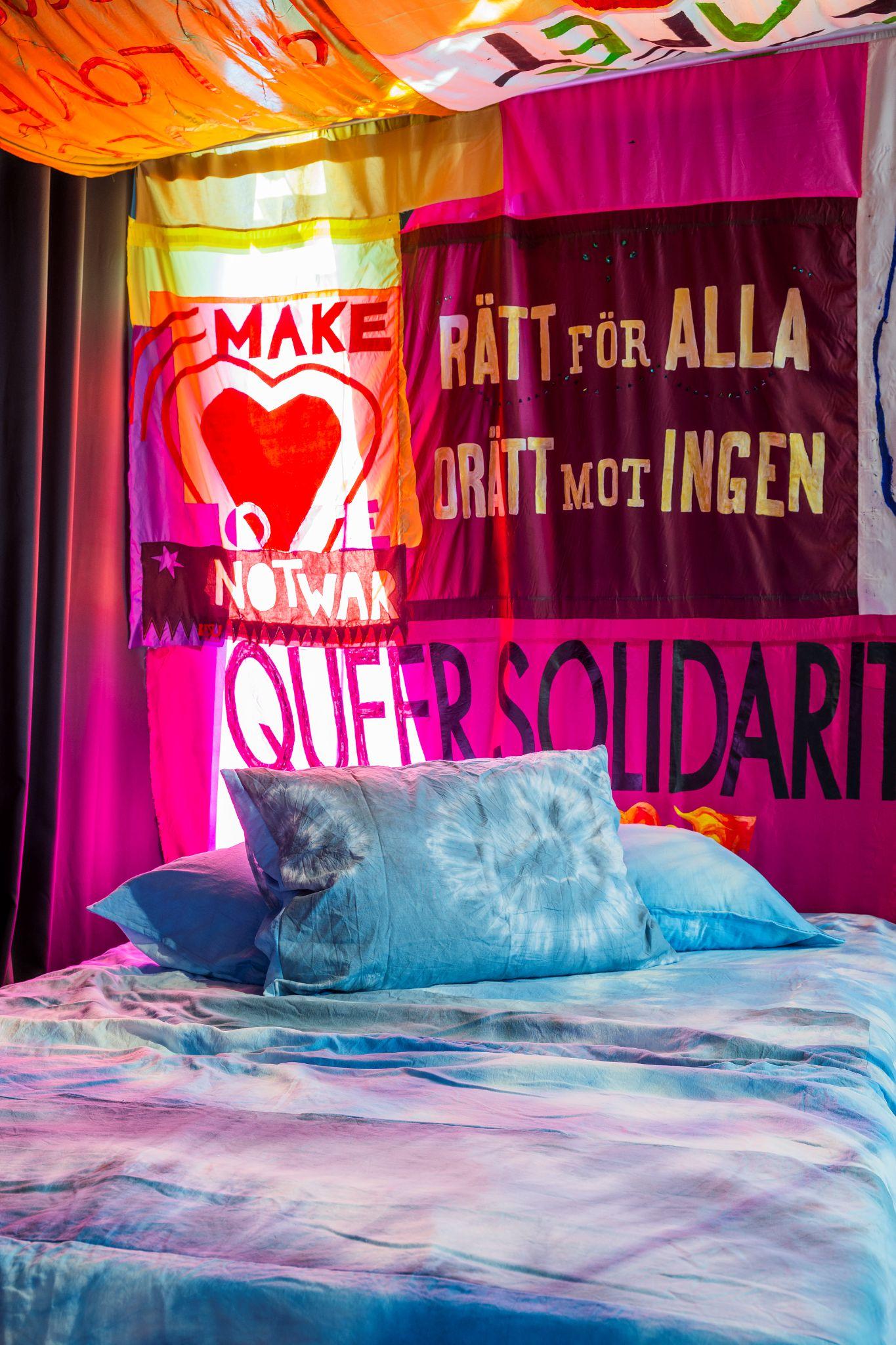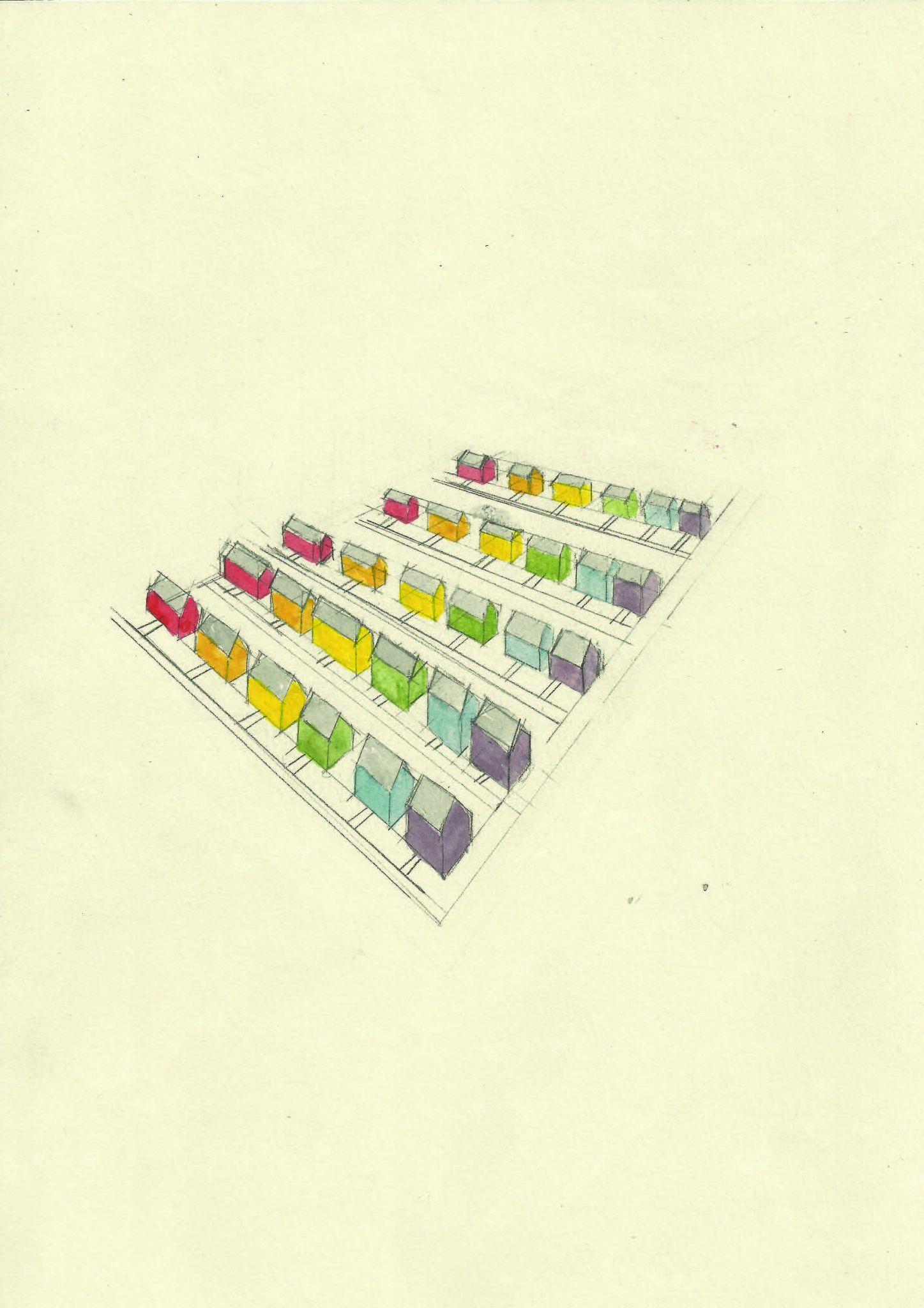‘Coming into Community’ at the Oslo Architecture Triennale


The Oslo Architecture Triennale kicked off on Friday, September 23, unveiling a variety of projects by arts and architecture institutions throughout Norway. The theme of this year’s Triennale is “Mission Neighborhood,” exploring community and shared space. The eighth iteration of Norway’s architectural celebration encourages its contributors to contemplate what truly constitutes a community.
The National Museum responded to the prompt by contributing the multi-part exhibition “Coming into Community.” a project which utilizes the queer gaze as a lens to analyze the history of architecture in Norway, as well as the broader global scene.
The exhibition is composed of two main parts. The first takes place in the museum’s Bucher Room and presents several examples of postwar housing projects that were created by and for marginalized people. These case studies provide a valuable perspective on issues of housing over the past seventy years, showing how queer people define and foster senses of community and neigborhood through architecture, policy, and lifestyle.

In this retrospective, there is a presentation of Sille Storihle’s film ‘The Stonewall Nation (2014)’, along with Storihle’s research materials. Storihle is an artist and filmmaker based between Oslo and Berlin. The film details the 1960’s movement led by activist Don Jackson. Jackson proposed that a group of gay men move to the remote Alpine County within the California desert to form a small community called the Stonewall Nation. This idea for a separatist gay state was a direct result of the 1969 Stonewall Riots. The goal of the state was to create a space free of harassment, prejudice, and violence for gay men.
The installation was created by Storihle in collaboration with the National Museum. This effort by a Norwegian artist and major institution puts into context the truly international impact of the Stonewall riots, spanning far beyond New York and even the United States. This moment began a global ripple effect, calling for human rights, as well as for the creation of safe spaces and community for queer people. This message is made especially impactful through the exhibition space, which presents both the Stonewall Nation film as well as an interview of Don Jackson discussing the movement.
Another case study of note was the work of Matrix, a London-based feminist architectural cooperative. Formally active from 1981 through 1993, Matrix worked against the patriarchal system they observed in the architecture that composed their lives. Before this, cities were critiqued to only really accommodate automobiles and men. To challenge this, the collective offered free architectural assistance to marginalized groups, working with women’s centers, schools, and housing projects. The collective worked to increase accessibility in communities that was often limited by patriarchally backed architecture construction methods. The women behind Matrix worked to educate and directly help members of their community, empowering those who live within it. The National Museum has many of Matrix’s public posters, writings, and architectural plans on view, giving viewers insight to the grassroots work they were taking part in.

The second feature of the exhibition is an immersive experience by the collective MYCKET. The Swedish art and architecture collective has transplanted a queer nightclub into the museum’s Sverre Fehn’s Pavilion, encouraging viewers to get loose on the dance floor and experience the inclusivity and fun its creators have personally experienced in similar settings.
When one enters the pavilion, they are invited to dress up from a vast closet of costume clothing, with outfits complete with feathers, tutus, and sequins. Once donning some new clothes, you enter a maze of an exhibition which ultimately leads you to a dance floor in the center of the pavilion. The space replicates the joy and acceptance that the members of MYCKET have found in queer nightlife spaces, and allows for viewers to experience it for themselves, without actually hitting the club. For the past decade, MYCKET has worked to create spaces such as this one, allowing people to experience the sense of community they tie to this specific type of space.
The MYCKET contribution provides a conceptual and playful contrast to the architectural plans and history seen in the Bucher Room. It acts as a way of exemplifying the inclusivity and culture which these historical plans work to foster. As a whole, the exhibition presents what architecture can look like from a marginalized perspective, and shines a light on the plethora of solutions that could make communities a better place.
Coming into Community The National Museum’s contribution to the Oslo Architecture Triennale is open through January 29, 2023 at Brynjulf Bulls plass 3, 0250 Oslo, Norway.
You Might Also Like
“Another Kind of Knowledge”: Portrait of Dorte Mandrup Explores Architecture Beyond Language
The Nordic Pavilion Revives Discussion About Communal Living
Interventions in Public Space: A Conversation with Allard van Hoorn
What's Your Reaction?
Writer, Cultbytes Lily Williams is a freelance writer based in Brooklyn, New York. She is a graduate from Hamilton College, where she studied Art History. Apart from writing, Lily is a cultural strategist working with arts institutions throughout the country.

